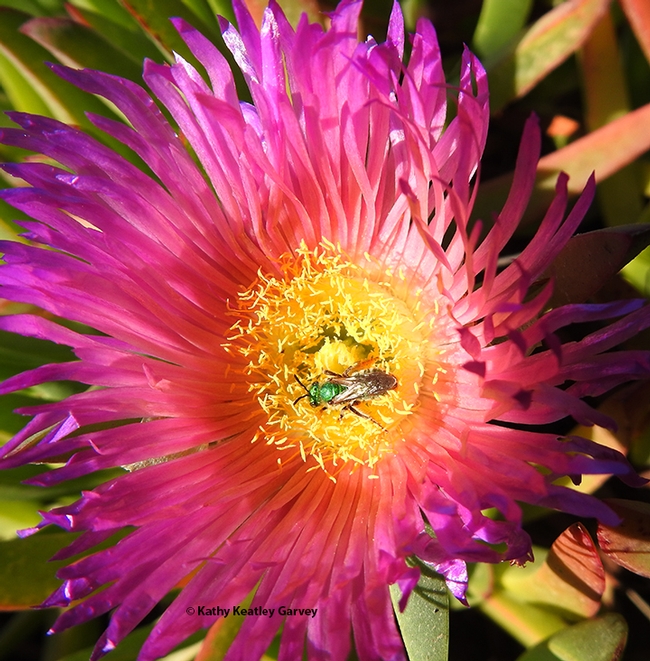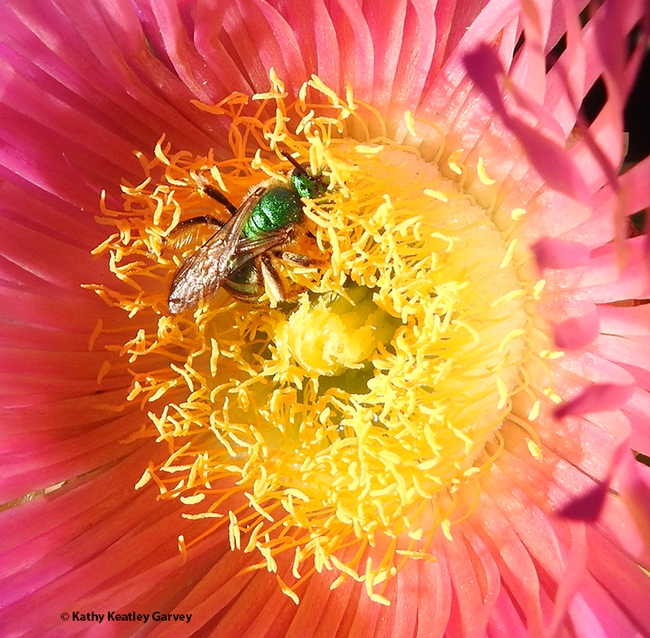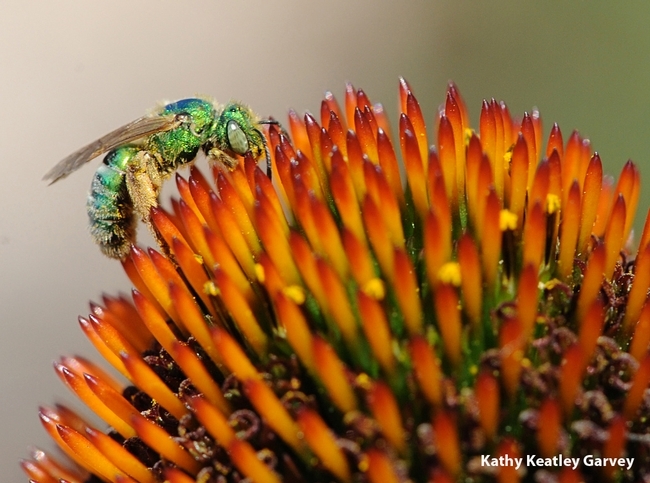- Author: Kathy Keatley Garvey

Urban entomologist Gordon Frankie, professor emeritus and research entomologist in the Department of Environmental Sciences, Policy, and Management at UC Berkeley, will be one of the speakers. He specializes in behavioral ecology of solitary bees in wildland and urban environments and co-authored the celebrated book, California Bees and Blooms: A Guide for Gardeners and Naturalists: (Heyday Books, 2014) by UC scientists, including the late Robbin Thorp, UC Davis distinguished professor of entomology. The book is available online from UC Agriculture and Natural Resources (UC ANR).
The Event: Bee Bash
Date: Saturday, April 1
Time: 10 a.m. to 3 p.m.
Place: Annie's Annuals and Perennials, 740 Market Ave, Richmond, Calif.
Cost: Free
This is Annie's Annuals' first-ever Bee Bash. Earlier the plant nursery hosted spectacular butterfly summits. Butterfly guru Art Shapiro, distinguished professor, UC Davis Department of Entomology and Nematology, keynoted the 2018 summit. (Read his remarks on Bug Squad)
The schedule of events:
10 a.m.: Jennifer Jewell: “Invitations From and To the Garden: Cultivating Places & People”
11 a.m.: John Whittlesey: “Bumble Bees--Their Natural History & Designing Gardens to Support Them”
12:30: Tora Rocha and Angela Laws: “Maintaining Native Bee Habitats”
1:30 p.m.: Gordon Frankie: “Characteristics of Pollinator Habitat Gardens”
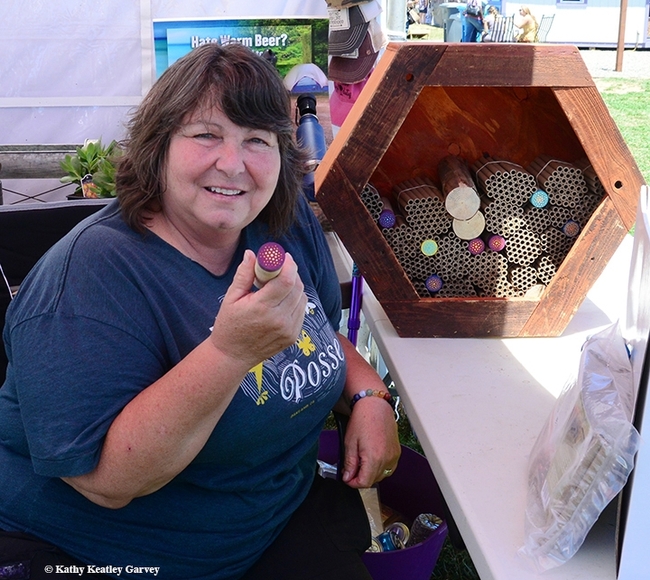
About the speakers:
Jewell hosts the national award-winning weekly public radio program and podcast, "Cultivating Place: Conversations on Natural History and the Human Impulse to Garden." She's authored several book, including The Earth in Her Hands, 75 Extraordinary Women Working in the World of Plants (Timber Press in 2020); Under Western Skies, Visionary Gardens from the Rockies to the Pacific Coast (Timber Press, May 2021); and What We Sow, to be published later this year by Timber Press.
Whittlesey is a nurseryman, garden designer, and author of The Plant Lovers Guide to Salvias, published by Timber Press in 2014.
Rocha is the founder and leader of the Pollinator Posse, a volunteer group based in Oakland that creates “pollinator corridors” in and around the Bay Area. (Check out the Pollinator Posse Facebook page.)
Laws, a community ecologist, holds the title of Endangered Species Conservation Biologist, Xerces Society of Invertebrate Conservation.
California Bees and Blooms is the work of Frankie, Thorp, Barbara Ertter of UC Berkeley, and Rollin Coville, a UC Berkeley doctoral alumnus and photographer. Thorp, 1933-2019 (see tribute) also co-authored Bumble Bees of North America: An Identification Guide (Princeton University, 2014).
Want a card set of California's common bees to help you identify them and learn more about them? The newly published (second edition) card set, "Common Bees in California," is available on the UC ANR catalog. From the website: "Nearly 1600 species of native bees can be found in California's rich ecosystems; this colorful pocket field guide will help you identify bees commonly found in urban gardens and landscapes." Frankie is one of the co-authors.
Resource:
Native Bees Are a Rich Natural Resource in Urban California Gardens (California Agriculture, Volume 63, Number 3)
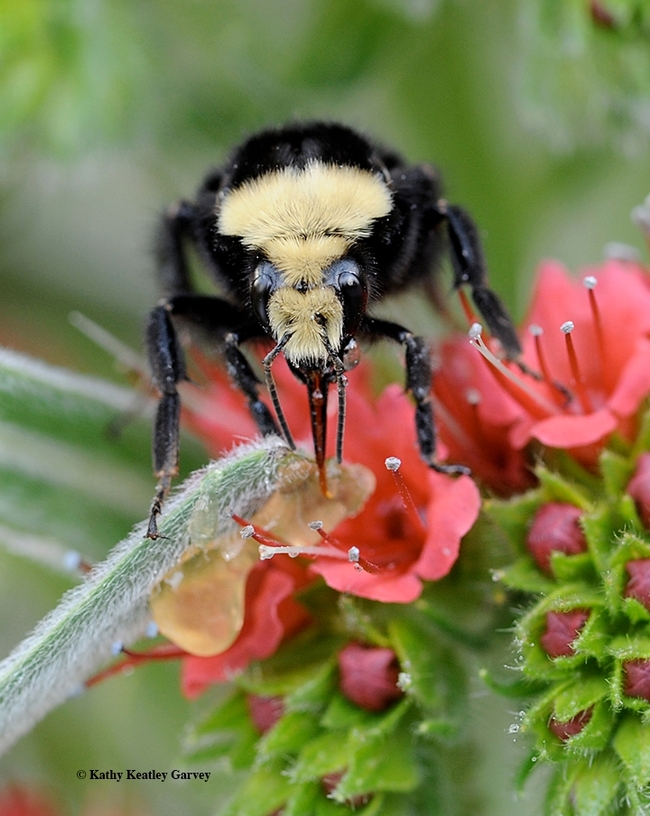
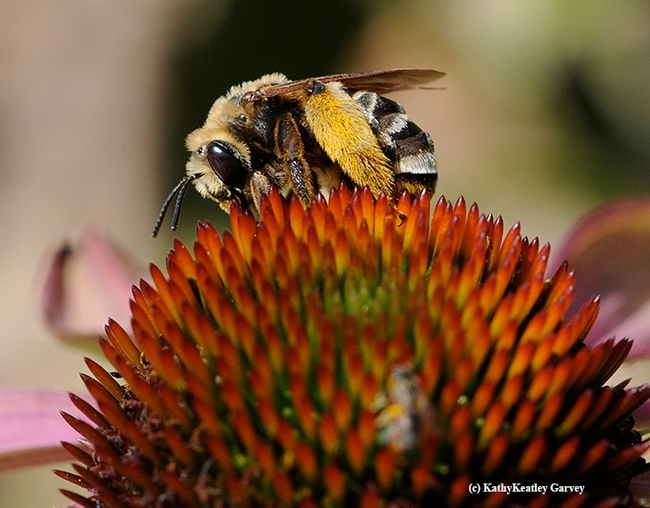

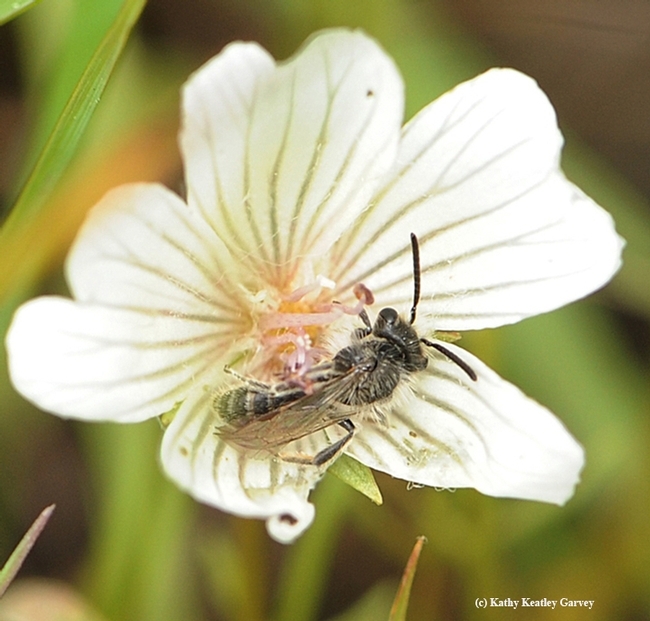

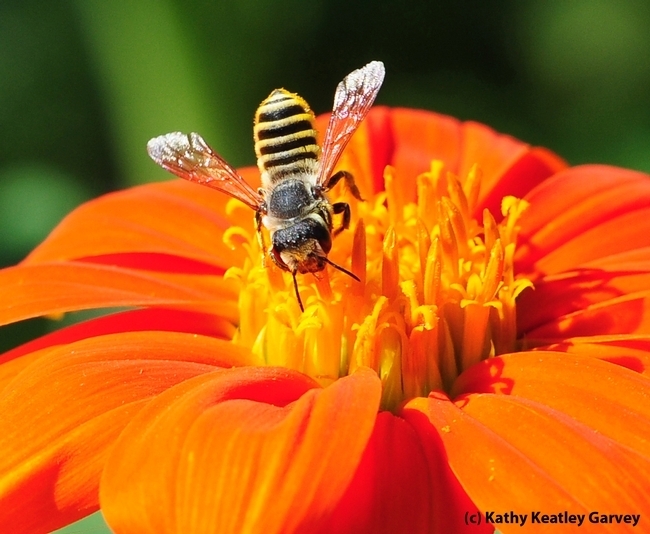
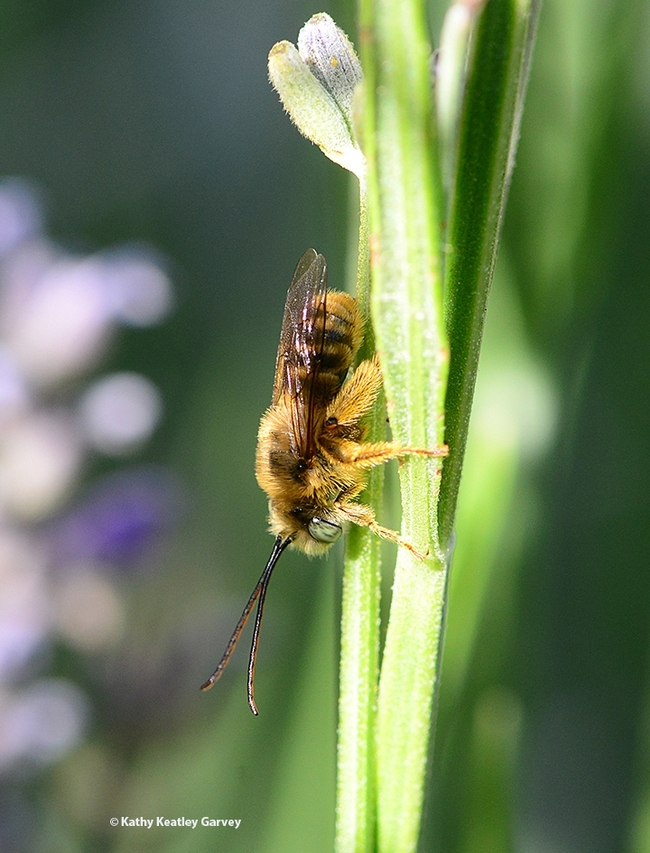
- Author: Kathy Keatley Garvey
Honey bees absolutely love African blue basil. If there ever were a "bee magnet," this plant is it.
We first learned of African blue basil, (Ocimum kilimandscharicum × basilicum 'Dark Opal'), through Gordon Frankie, UC Berkeley professor and the late Robbin Thorp, distinguished emeritus professor of entomology at UC Davis. They co-authored the book, California Bees and Blooms: a Guide for Gardeners and Naturalists with Rollin Coville and Barbara Ertter, also affiliated with UC Berkeley.
We plant it every year in our pollinator garden. Wikipedia calls African blue basil "a cross between camphor basil and dark opal basil. "African blue basil plants are sterile, unable to produce seeds of their own, and can only be propagated by cuttings.
"All parts of the flower, leaves and stems are edible; although some might find the camphor scent too strong for use in the kitchen, the herb reportedly yields a tasty pesto with a 'rich, mellow flavor' and can be used as a seasoning in soups and salads, particularly those featuring tomato, green beans, chicken, etc.," Wikipedia tells us. "The leaves of African blue basil start out purple when young, only growing green as the given leaf grows to its full size, and even then retaining purple veins. Based on other purple basils, the color is from anthocyanins, especially cyanidin-3-(di-p-coumarylglucoside)-5-glucoside, but also other cyanidin-based and peonidin-based compounds."
A final note that Wikipedia relates: It "blooms profusely like an annual, but being sterile can never go to seed. It is also taller than many basil cultivars. These blooms are very good at attracting bees and other pollinators."
Right. "These blooms are very good at attracting bees and other pollinators."
Wikipedia forgot to mention that blooms are "very good at attracting predators," like praying mantids. They go where the bees are, and the bees are in the African blue basil.
Can you find the mantis in the image below?
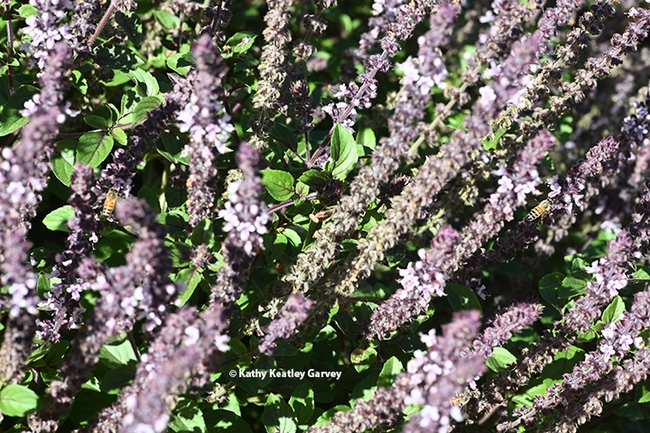
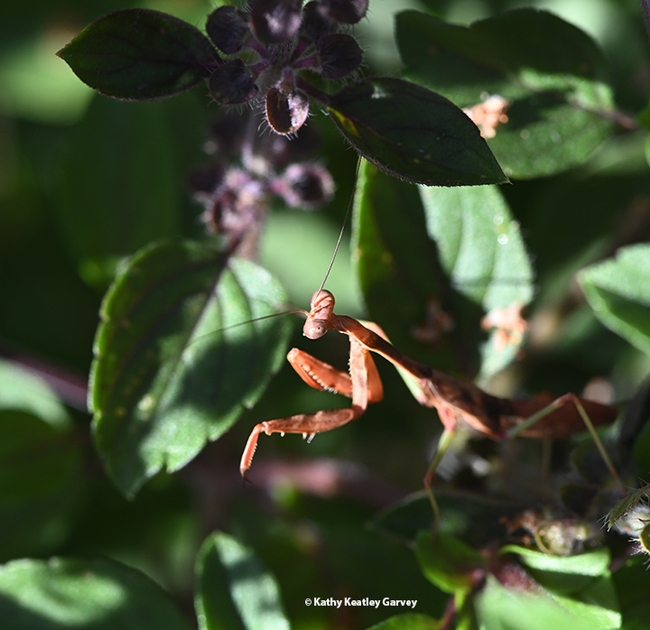
- Author: Kathy Keatley Garvey
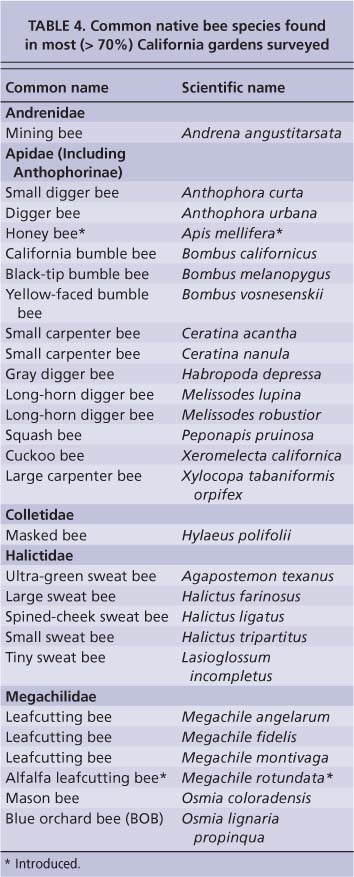
Back in the 2009, a team of University of California scientists, led by Gordon Frankie of UC Berkeley and Robbin Thorp (1933-2019) of UC Davis, wrote this incredible article, "Native Bees are a Rich Natural Resource in Urban California Gardens," published in California Agriculture (UC Agriculture and Natural Resources).
It's an excellent resource.
The abstract:
"Evidence is mounting that pollinators of crop and wildland plants are declining worldwide. Our research group at UC Berkeley and UC Davis conducted a 3-year survey of bee pollinators in seven cities from Northern California to Southern California. Results indicate that many types of urban residential gardens provide floral and nesting resources for the reproduction and survival of bees, especially a diversity of native bees. Habitat gardening for bees, using targeted ornamental plants, can predictably increase bee diversity and abundance, and provide clear pollination benefits."
Jennifer Hernandez, Barbara Ertter, Jaime Pawelek, Sara Witt, Mary Schindler, Rollin Coville, and Victoria Wojcik. Coville provided the images.
"Outdoor urban areas worldwide are known to support a rich diversity of insect life (Frankie and Ehler 1978)," they wrote. "Some insects are undesirable and characterized as pests, such as aphids, snails, earwigs and borers; urban residents are most aware of these. Other urban insects are considered beneficial or aesthetically pleasing, such as ladybird beetles and butterflies; this category includes a rich variety of insects whose roles in gardens go largely unnoticed and are thus underappreciated (Grissell 2001; Tallamy 2009). They regularly visit flowers and pollinate them, an important ecological service."
"We report the results of a 2005-to-2007 survey of bees and their associations with a wide variety of ornamental plant species in seven urban areas, from Northern California to Southern California. While non-native honey bees (Apis mellifera) are common in many gardens, numerous California native bee species also visit urban ornamental flowers. Of about 4,000 bee species known in the entire United States, about 1,600 have been recorded in California."
That deserves to be repeated. Of the 4000 bee species known in the United States, about 1600 reside in California. See some of them listed on the chart above.
Notice it includes the non-native bee, the honey bee, Apis mellfera. It is an "introduced bee," although numerous non-scientists think it's a native. European colonists introduced it to America (in what is now Virginia) in 1622.
The phrase, "Save the (Honey) Bees," became prominent during the colony collapse disorder. But the bees that need saving now are the natives.
If you want to know more about the native bees in California, this book should be in your library: California Bees and Blooms: A Guide for Gardeners and Naturalists by UC-affiliated scientists
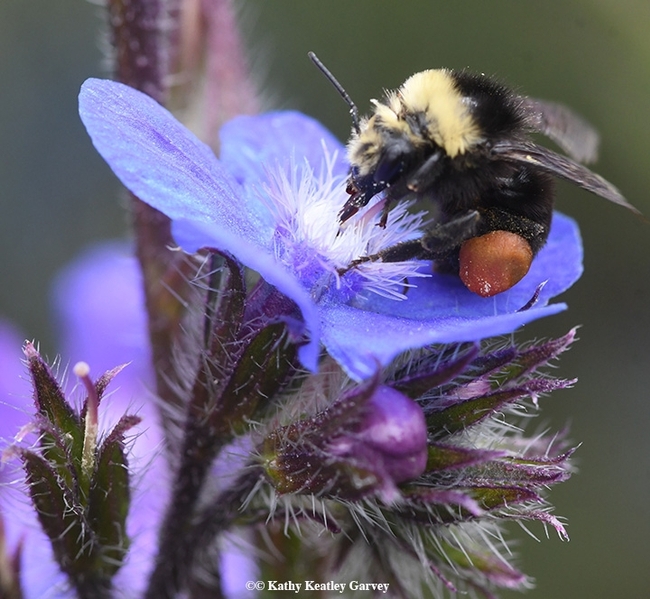
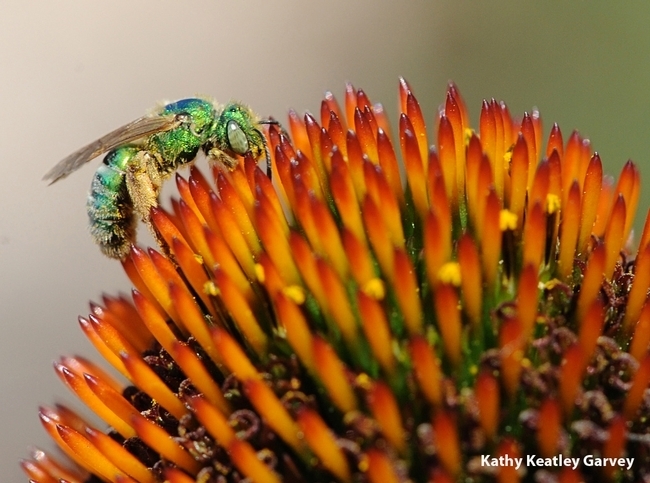
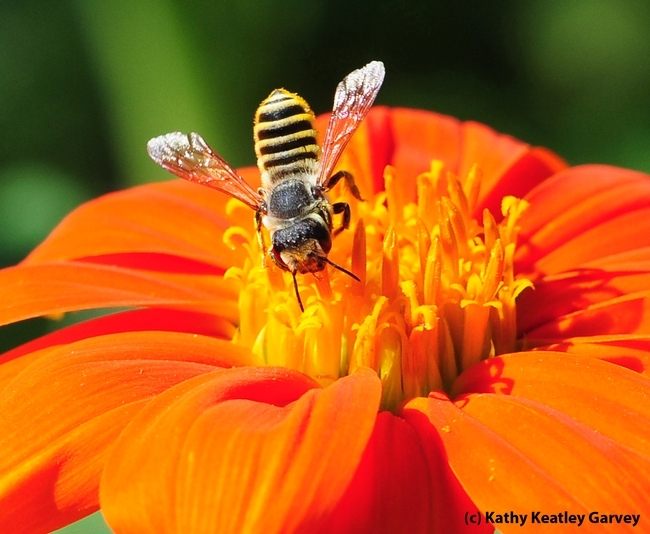
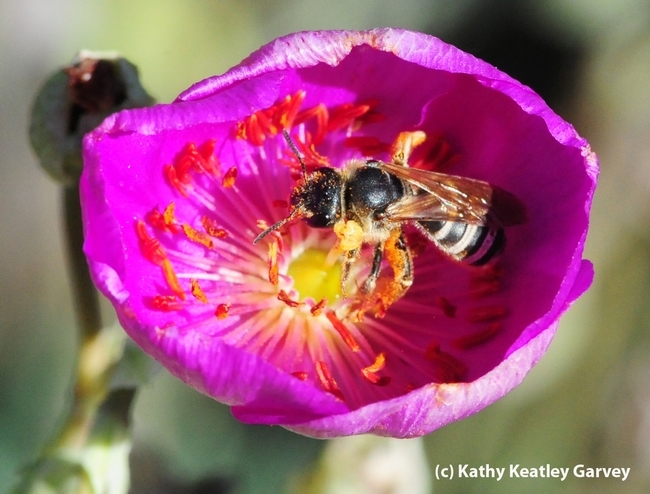
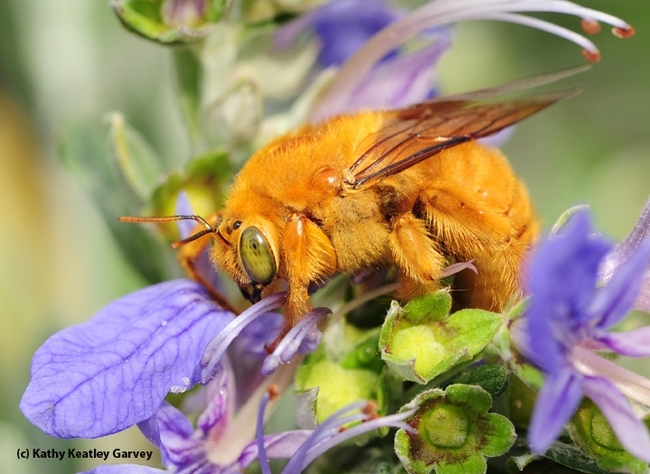
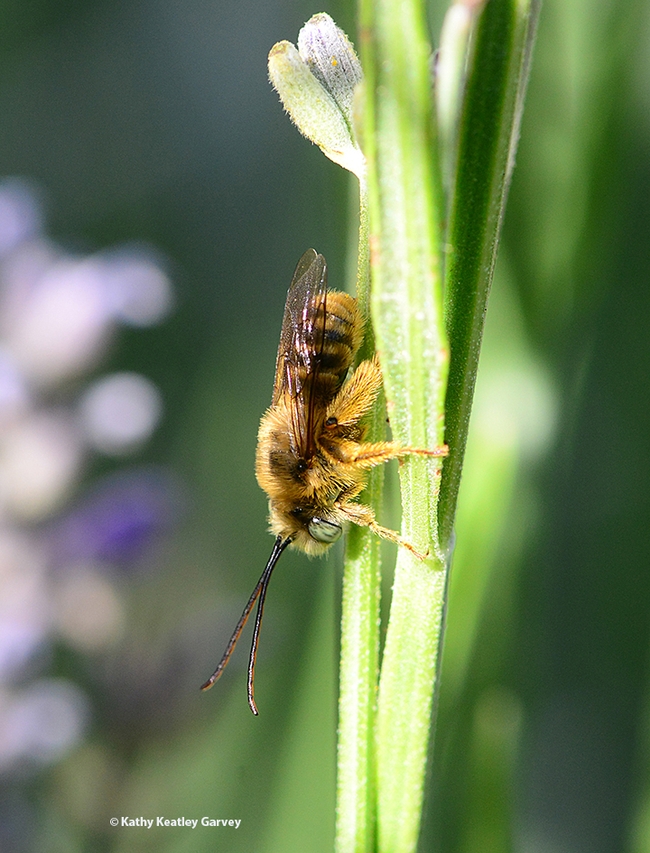
- Author: Kathy Keatley Garvey
"Sweat bees have earned their common name from the tendency, especially of the smaller species,to alight on one's skin and lap up perspiration for both its moisture and salt content."
So write University of California scientists in their award-winning book, California Bees and Blooms, a Guide for Gardeners and Naturalists.
California has some 1600 species of undomesticated or wild bees, point out the authors (Gordon Frankie, Robbin Thorp, Rollin Coville and Barbara Ertter).
And one of them is the sweat bee, Halictus ligatus, a member of the family Halictidae. It's a medium-sized, ground-nesting bee with a striped abdomen.
This week one of these species (as identified by research scientist John Ascher) looked especially striking on a Black-Eyed Susan, Rudbeckia hirta, a member of the Aster (Asteraceae) family. Both the plant and the bee are natives.
Several years ago we managed to photograph a flameskimmer dragonfly, Libellula saturata, munching on one of these sweat bees. Not a good day for that little gal!
No dragonflies were around, however, when we watched this one foraging on a Black-Eyed Susan.
Did you know that the Black-Eyed Susan is the designated state flower of Maryland? And that it was the inspiration for the University of Southern Mississippi's school colors (black and gold)? And that it's a larval host to butterflies such as the bordered batch, gorgone checkerspot and silvery checkerspot?
Who knew? If you plant it, though, be aware that it is toxic (when ingested) to cats.
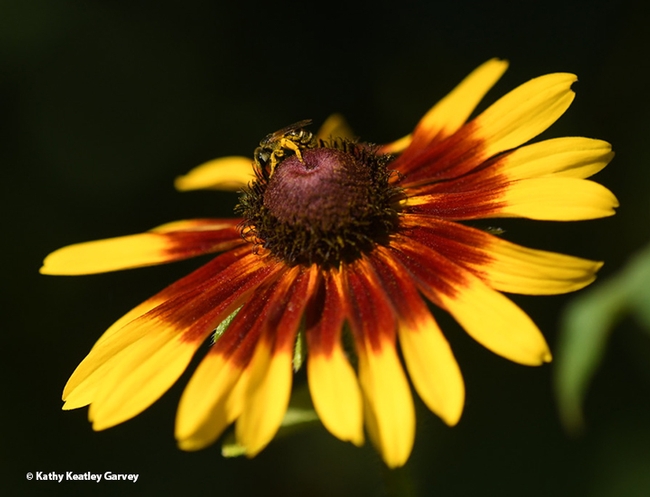
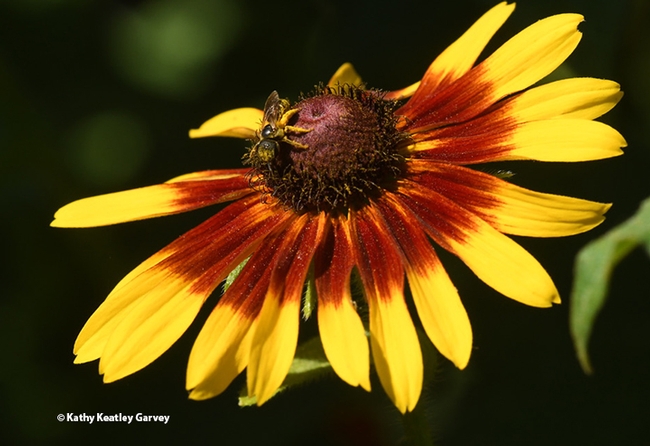
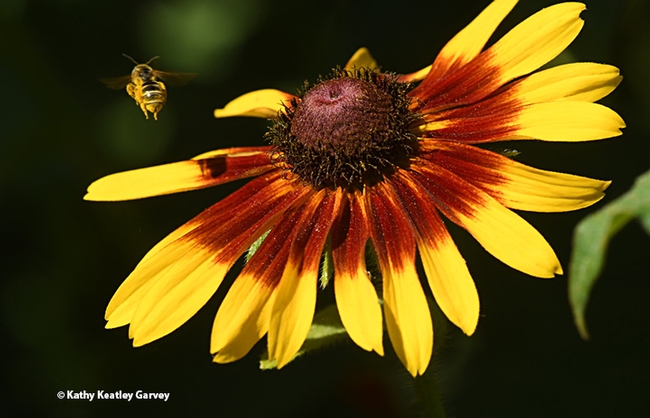
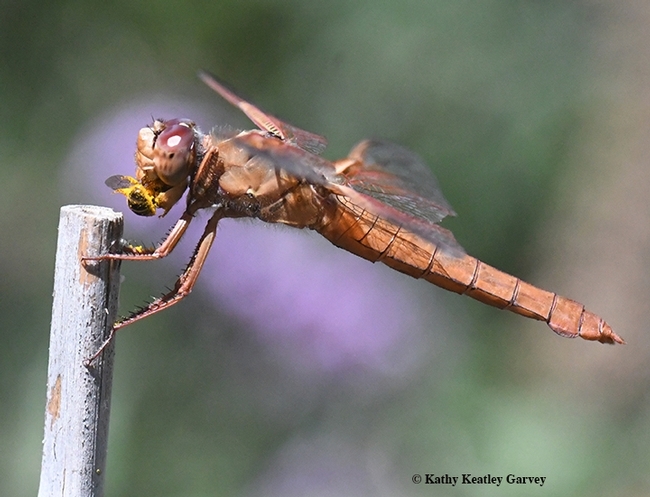
- Author: Kathy Keatley Garvey
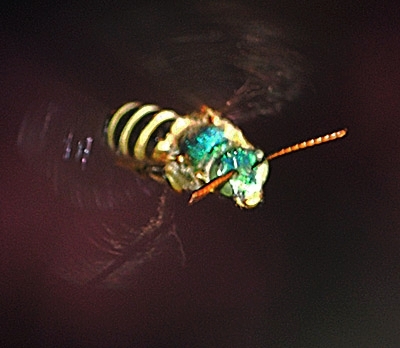
What was that foraging on a pink iceplant blossom near a path to the ocean? A metallic green sweat bee, Agapostemon texanus, also called an ultra green sweat bee.
We usually don't see A. texanus unless it's spring or summer, but there it was, out of season. Or rather, there "he" was. Males and females are easily distinguishable. The female is solid green, from head to thorax to abdomen, while the green coloration on the male appears on the head and thorax.
We remember pollinator specialist Robbin Thorp (1933-2019) emeritus professor of entomology at UC Davis, talking about them. He delighted in seeing them at his monitoring site, the Department of Entomology and Nematology's Häagen-Dazs Honey Bee Haven on Bee Biology Road, UC Davis campus. The Agapostemon are members of the Halictinae family. They are often called "sweat bees" because they are attracted to human sweat, probably for the salt.
Green sweat bees are among the bees featured in the book, "California Bees and Blooms: A Guide for Gardeners and Naturalists," co-authored by the University of California team of Gordon Frankie, UC Berkeley; Robbin Thorp, UC Davis; and UC Berkeley affiliates Rollin Coville (photographer and entomologist) and Barbara Ertter (plant specialist). Frankie, Thorp, Coville and Ertter (and others) also published "Native Bees Are a Rich Natural Resource in Urban California Gardens" in California Agriculture.
